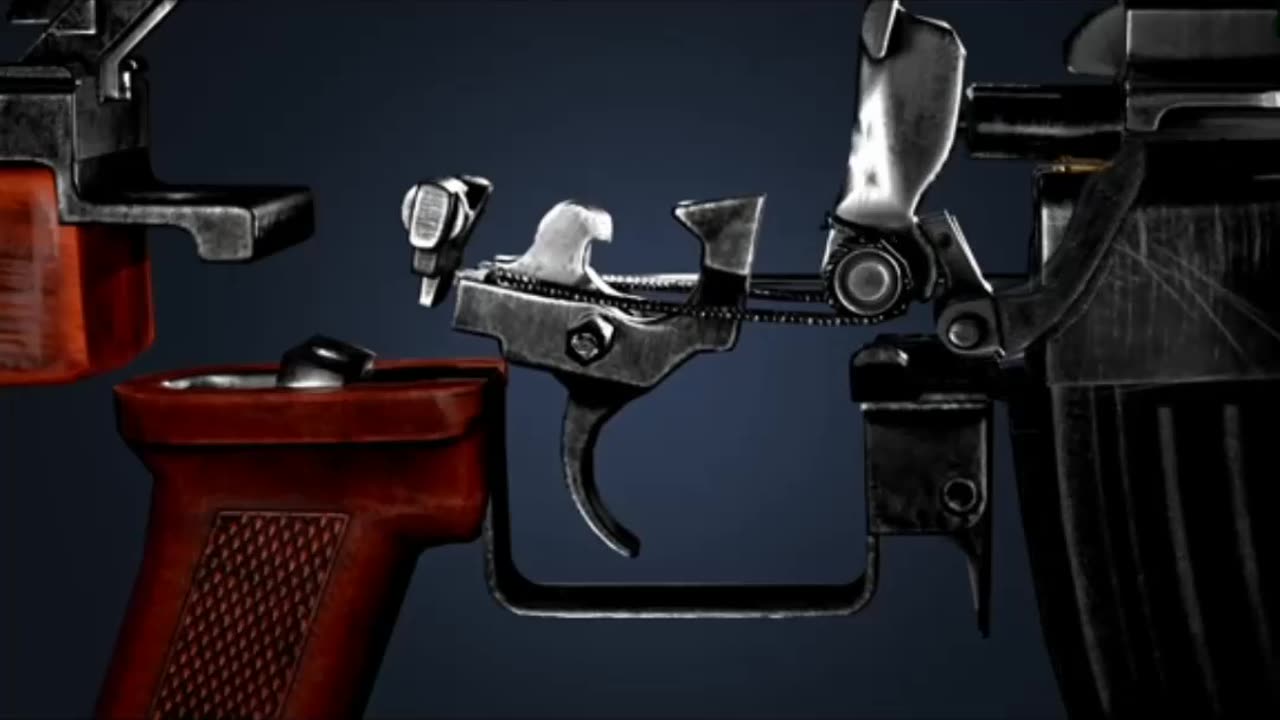Premium Only Content

Part 1: "Unlocking the History and Impact of the Iconic AK-47 Rifle"
The AK-47 operates on a gas-operated, rotating bolt system. Here's a simplified breakdown of how it works:
1. Firing: When a round is fired, gases from the ignited gunpowder propel the bullet down the barrel. Simultaneously, a portion of these gases is diverted through a small hole in the barrel and into a gas tube located above it.
2. Gas Tube: The high-pressure gases flow through the gas tube and into a gas chamber located above the barrel. This gas exerts pressure on a piston that's connected to the bolt carrier.
3. Bolt Carrier Movement: The piston's backward movement forces the bolt carrier (which houses the bolt itself) to move backward as well. This action begins the cycling process.
4. Bolt Unlocking: As the bolt carrier moves back, it rotates the bolt's locking lugs out of engagement with the barrel extension, allowing the bolt to unlock from the barrel.
5. Ejection and Chambering: As the bolt carrier continues to move backward, it extracts and ejects the spent cartridge case. Simultaneously, a fresh round is stripped from the magazine and pushed up into the chamber.
6. Bolt Forward Movement: After the spent case is ejected and the new round is chambered, the spring-loaded bolt carrier is pushed forward by its recoil spring.
7. Bolt Locking: As the bolt carrier moves forward, the bolt's locking lugs engage with the barrel extension, locking the bolt in place.
8. Firing Pin Strike: With the bolt locked, the rifle is ready to fire again. When the trigger is pulled, the firing pin strikes the primer of the chambered round, igniting the gunpowder and repeating the cycle.
This gas-operated mechanism, characterized by its simplicity and reliability, is one of the reasons the AK-47 is renowned for functioning effectively even in harsh conditions and with minimal maintenance.
-
 33:49
33:49
Quite Frankly
20 hours agoThe Christmas Eve Midnight Telethon
71.4K8 -
 2:12:46
2:12:46
Price of Reason
19 hours agoAmber Heard BACKS Blake Lively Lawsuit Against Justin Baldoni! Is Disney CEO Bob Iger in TROUBLE?
35.7K13 -
 1:01:17
1:01:17
The StoneZONE with Roger Stone
14 hours agoChristmas Edition: Why the Panama Canal is Part of the America First Agenda | The StoneZONE
110K42 -
 18:12:15
18:12:15
LFA TV
1 day agoLFA TV CHRISTMAS EVE REPLAY
128K14 -
 13:32
13:32
Scammer Payback
15 hours agoChanging the Scammer's Desktop Background to his Location
2.87K3 -
 4:21
4:21
BIG NEM
17 hours agoNikola Tesla's Secret to Cultivating Creativity & Genius
1.49K1 -
 15:03
15:03
The Anthony Rogers Show
1 day agoAnthony Rogers - Live at Cusumano's Pizza (Upstairs)
1.2K1 -
 4:33:48
4:33:48
tacetmort3m
1 day ago🔴 LIVE - THE ZONE KEEPS PULLING ME BACK - STALKER 2 - PART 15
68K12 -
 22:45
22:45
Brewzle
21 hours agoI Went Drinking In A Real Bourbon Castle
49K4 -
 48:36
48:36
PMG
1 day ago $4.30 earned"Parkland Parent Speaks Out On Kamala Harris Using Victims"
40.1K12